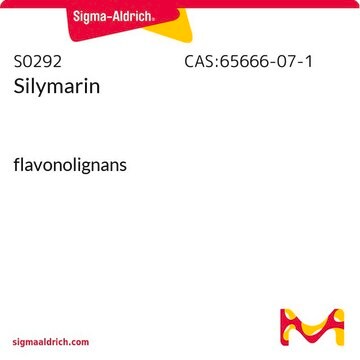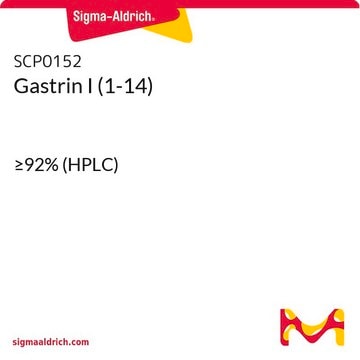S7067
SB 202190
≥98% (HPLC), powder, p38 MAP kinase inhibitor
Synonym(s):
4-(4-Fluorophenyl)-2-(4-hydroxyphenyl)-5-(4-pyridyl)-1H-imidazole
About This Item
Recommended Products
product name
SB 202190, ≥98% (HPLC)
Quality Level
Assay
≥98% (HPLC)
form
powder
color
faintly yellow, to beige
solubility
DMSO: 10 mg/mL, clear
originator
GlaxoSmithKline
storage temp.
2-8°C
SMILES string
Oc1ccc(cc1)-c2nc(-c3ccc(F)cc3)c([nH]2)-c4ccncc4
InChI
1S/C20H14FN3O/c21-16-5-1-13(2-6-16)18-19(14-9-11-22-12-10-14)24-20(23-18)15-3-7-17(25)8-4-15/h1-12,25H,(H,23,24)
InChI key
QHKYPYXTTXKZST-UHFFFAOYSA-N
Gene Information
human ... MAPK14(1432)
General description
Application
- to investigate the role of p38mitogen-activated protein kinase (MAPK) signaling in establishment of reovirus infection
- as a p38α inhibitor in in vivo studies to study its impact on the development or progression of adenocarcinoma in the colon mucosa tissues of APC Min/+ mice.
- as a component of basic BC medium to culture basal progenitor cells.
- as a component of normal endometrium and endometrial tumor media for organoid culture.
Biochem/physiol Actions
Features and Benefits
Legal Information
Storage Class Code
11 - Combustible Solids
WGK
WGK 3
Personal Protective Equipment
Certificates of Analysis (COA)
Search for Certificates of Analysis (COA) by entering the products Lot/Batch Number. Lot and Batch Numbers can be found on a product’s label following the words ‘Lot’ or ‘Batch’.
Already Own This Product?
Find documentation for the products that you have recently purchased in the Document Library.
Customers Also Viewed
Our team of scientists has experience in all areas of research including Life Science, Material Science, Chemical Synthesis, Chromatography, Analytical and many others.
Contact Technical Service


![[Leu15]-Gastrin I human ≥95% (HPLC)](/deepweb/assets/sigmaaldrich/product/structures/153/342/d4cb3dd7-13f1-46cf-8d1f-3907a5de7a83/640/d4cb3dd7-13f1-46cf-8d1f-3907a5de7a83.png)









